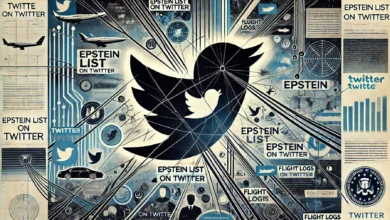Publicly Understanding Its Meaning, Importance, and Applications in Modern Society

Introduction to Publicly
The term “publicly” holds significant weight in both language and society, often serving as a cornerstone for discussions about transparency, communication, and accountability. Etymologically derived from the Latin word publicus, meaning “of the people,” “publicly” encompasses actions, statements, or events that are open to observation or participation by the general populace. Its application ranges from everyday conversations to matters of international governance.
Understanding what acting or speaking “publicly” means is essential in today’s interconnected world. The distinction between private and public spheres has blurred, driven by the rise of digital platforms and the demand for transparency in all areas of life. From social media posts to public policies, the idea of “publicly” underscores collective accountability that influences personal, professional, and political domains.
In a time where the line between public and private life is increasingly complex, exploring the nuances of “publicly” provides valuable insights into how societies function and thrive.
The Importance of Public Expression
2.1 The Role of Transparency
Transparency lies at the heart of public expression, serving as a vital mechanism for building trust within communities and organizations. When actions or decisions are made publicly, they invite scrutiny, ensuring accountability. Governments, for instance, hold press conferences and release public statements to inform citizens about policies and initiatives. Similarly, businesses share quarterly reports and updates to maintain trust among stakeholders.
Transparency empowers individuals by giving them access to information. A transparent society fosters democratic values, enabling informed decision-making and participation. For instance, public disclosures about environmental impacts have pushed corporations to adopt sustainable practices, proving that acting publicly can drive meaningful change.
2.2 Public vs. Private Communication
Public and private communication serve distinct purposes, yet their boundaries often overlap. Public communication is designed for a broad audience and addresses collective concerns, while private communication caters to personal or confidential matters. Context determines the appropriateness of either mode.
For example, while public platforms like Twitter effectively spread awareness or promote causes, private channels such as encrypted messaging apps are essential for confidential discussions. Balancing these modes requires understanding the implications of each, as the consequences of public statements can be far-reaching.
Applications of “Publicly” in Different Domains

3.1 Publicly in Media and Journalism
Media and journalism thrive on the concept of “publicly,” as their primary role is to inform and educate the masses. Investigative journalism, for example, uncovers truths hidden from the public eye, often holding powerful entities accountable. Ethical reporting ensures that information shared publicly upholds accuracy and objectivity, minimizing harm.
The rise of digital platforms has amplified the reach of public discourse, with citizen journalism playing a significant role. However, the challenge lies in distinguishing credible information from misinformation, emphasizing the need for responsible public reporting.
3.2 Publicly in Social Media
Social media platforms epitomize the concept of acting “publicly.” These platforms have revolutionized how we connect and communicate, from individuals sharing personal milestones to brands promoting campaigns. Public posts can amplify voices, create communities, and drive social change.
However, social media’s public nature also comes with risks, including cyberbullying, privacy breaches, and the rapid spread of misinformation. To navigate these challenges, users must exercise caution and critical thinking and ensure that their public interactions are constructive and respectful.
3.3 Publicly in Governance and Activism
Governments and activists often rely on public declarations to mobilize support and enact change. Policies, press releases, and public speeches are tools for transparency and engagement. On the other hand, activists harness the power of public protests and petitions to draw attention to pressing issues.
Historic movements, such as the Civil Rights Movement and recent climate strikes, underscore the importance of public action to rally support and demand accountability. These examples highlight how public actions can shape the course of history.
3.4 Publicly in Legal and Ethical Contexts
Acting publicly often aligns with principles of fairness and justice in legal and ethical contexts. Legal requirements for public disclosure, such as financial audits or environmental impact assessments, ensure that organizations remain accountable to the public.
Ethically, public actions demand a balance between openness and respect for privacy. Whistleblowers, for instance, often face ethical dilemmas when disclosing information publicly, weighing the greater good against potential repercussions.
Challenges and Risks of Public Disclosure
4.1 Privacy Concerns
One of the most significant challenges of public disclosure is safeguarding privacy. While transparency fosters trust, excessive disclosure can compromise personal or organizational privacy. Data breaches, for instance, often result from inadequate measures to protect sensitive information shared publicly.
Striking a balance requires robust data protection policies and ethical guidelines, ensuring that the benefits of public disclosure outweigh potential risks.
4.2 Misinformation and Its Spread
Public platforms are susceptible to the rapid spread of misinformation, which can distort public perception and harm reputations. Social media algorithms often prioritize engagement over accuracy, exacerbating this issue.
Addressing misinformation requires a multi-faceted approach, including fact-checking, media literacy, and platform accountability. Public figures and organizations must also commit to transparency and accuracy in their statements.
4.3 Repercussions of Public Statements
Public statements carry significant weight, with the potential to inspire or alienate. Missteps can lead to public backlash, reputational damage, and even legal consequences. Examples abound of public figures whose careers suffered due to ill-considered remarks.
To mitigate risks, individuals and organizations should prioritize thoughtful, informed communication and prepare to address criticism constructively.
Best Practices for Public Expression
Practical public expression hinges on clarity, transparency, and responsibility. Individuals and organizations can adopt the following best practices:
- Be Clear and Concise: Craft messages that are easy to understand, ensuring the intended audience can grasp the key points.
- Verify Information: Ensure accuracy before sharing information publicly, especially on sensitive topics.
- Engage Responsibly: Foster constructive dialogue, avoiding inflammatory language or behavior.
- Respect Privacy: Balance transparency with protecting personal or organizational privacy.
By adhering to these principles, public expression can foster trust and collaboration while minimizing risks.
Conclusion
The concept of “publicly” is integral to modern society, influencing how we communicate, govern, and interact. Its significance lies in promoting transparency, accountability, and collective growth. However, navigating the complexities of public expression requires a thoughtful approach, balancing openness with responsibility.
By embracing the principles of transparency and respect, individuals and organizations can harness the power of public actions to drive positive change and foster stronger communities.
Frequently Asked Questions (FAQs)
1. What does “publicly” mean in legal terms? In legal contexts, “publicly” often refers to actions, statements, or disclosures made available to the general public, such as public records or open court proceedings.
2. How can individuals ensure their public statements are accurate? Verify facts through credible sources, avoid speculation, and consult experts when addressing complex topics.
3. What are the risks of sharing information publicly on social media? Risks include privacy breaches, cyberbullying, and the spread of misinformation, highlighting the need for caution and critical thinking.
4. Why is transparency important for public entities? Transparency builds trust, fosters accountability, and enables informed public participation, which is essential for democratic governance.
5. How can misinformation be effectively countered in public domains? Promote media literacy, implement fact-checking measures, and hold platforms accountable for curbing false information.
6. What role does cultural context play in defining public behavior? Cultural norms influence what is considered appropriate for public disclosure, underscoring the importance of context in public expression.





